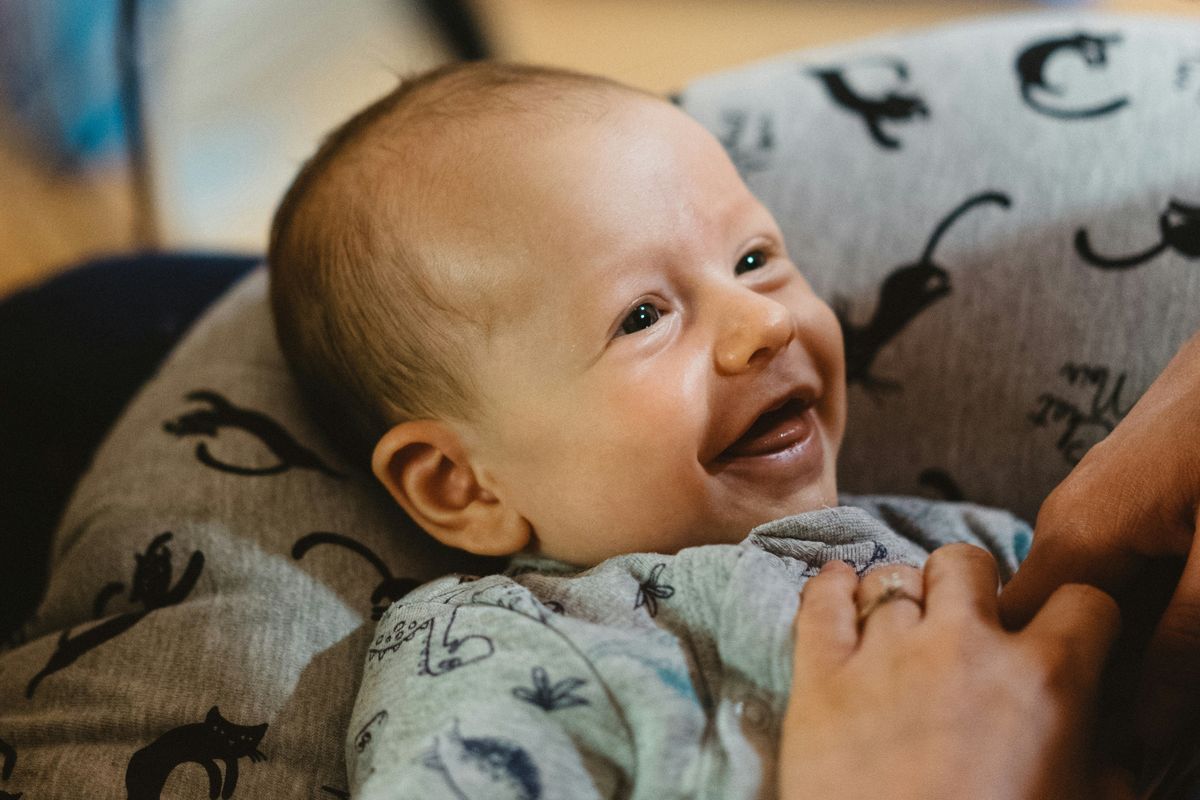Can babies pick out the good guy? An experiment shows they can tell pretty early on.
Babies got it right nearly 100% of the time.
Babies can recognize 'good guys' early on according to research
It's often said that babies and dogs recognize people that may not have the best intentions. A dog may bark incessantly while a baby may become fussy and keep reaching for their safe person while in the presence of someone they deem as unsafe. This is assumed to be a sort of inherent trait and while it's difficult to accurately measure intuition, researchers have tried to pinpoint if infants can recognize good vs bad.
Over 14 years ago researchers were curious on if babies could pick out the "good guy" and if their preference would be for representation of the good guy or the bad guy. Of course since these were literal infants, there was no way to ask the babies why they chose the way they did but there was enough data for them to see that babies actually preferred the "good character" over the bad one.
In the experiment, babies watch a puppet show that involve characters that are essentially just shapes with googly eyes glued onto them. The red circle is tying to climb up a hill but keeps falling down, that's when the blue square appears and helps the circle climb the hill by giving him a boost from behind, securing the red circle at the top of the hill. On the next try to get up the hill, the red circle is met by a yellow triangle that sees its fellow shape trying to climb the hill but instead of helping, the triangle pushes the circle back down. Kind of rude but okay.

The babies, some as young as 6 months are facing away from their parents so they can't see their reaction, the researchers then bring out replicas of the characters and asks the baby to pick one. Before the babies see their friendly neighborhood shapes, the researchers tell the parents to close their eyes as to not accidentally influence which shape the baby choses. In nearly every instance the infant chose the character that was deemed the helper proving that babies can differentiate between good social behaviors and bad social behaviors.
This experiment has been replicated multiple times with two being unable to replicate the results at the same high rate though the babies still chose the helper more than the hinderer. Other attempts at replicating the results were much more successful confirming that babies do choose the "good guy" over the "bad guy."

Recently a video of one of the experiments resurfaced on social media showing the preference for the "helper," but in this video, the helper character was the yellow triangle and the bad guy or the hinderer character was the blue square. This led people to believe that the babies were simply picking the character that was more brightly colored, assuming that if the roles were reversed they would still pick the yellow character.
@medspired The moral life of babies (part 1) | ‘Hill Paradigm’ (2007) by J. Kiley Hamlin, Ph.D. & colleagues via The Infant Cognition Centre at Yale Infants as early as 6 months might prefer an individual who “helps another person” to one who “hinders another person”. Researchers believed these findings constitute evidence that moral evaluation does not require language or complex reasoning & may be a fundamental part of human cognition - even in the preverbal stage. #MEDspiration . . . #parenting #parentingtips #toddlerlearning #babylearning #psychology #psychologyfacts #familymedicine #infant #childdevelopment #neuroscience #medicalresearch #yale
But many people don't realize that the experiment has already been completed using the alternative scenario producing the same results–babies prefer the helper. In fact, there was a large-scale coordinated multi-lab replication of this experiment which produced the same results of infants preferring the "good guy." The original researchers attempted to recreate the experiment again with 3-month-old infants measuring their preference by how long they gazed at the characters. Surprisingly the results were similar, the younger babies still seem to prefer looking at the character that would be deemed the "good guy."
Given that these experiments involve nonverbal infants, there will likely be more experiments to attempt to replicate the results throughout the years. But for now it seems that the answer to the question of if babies can pick out the good guy is yes, it would seem so.
